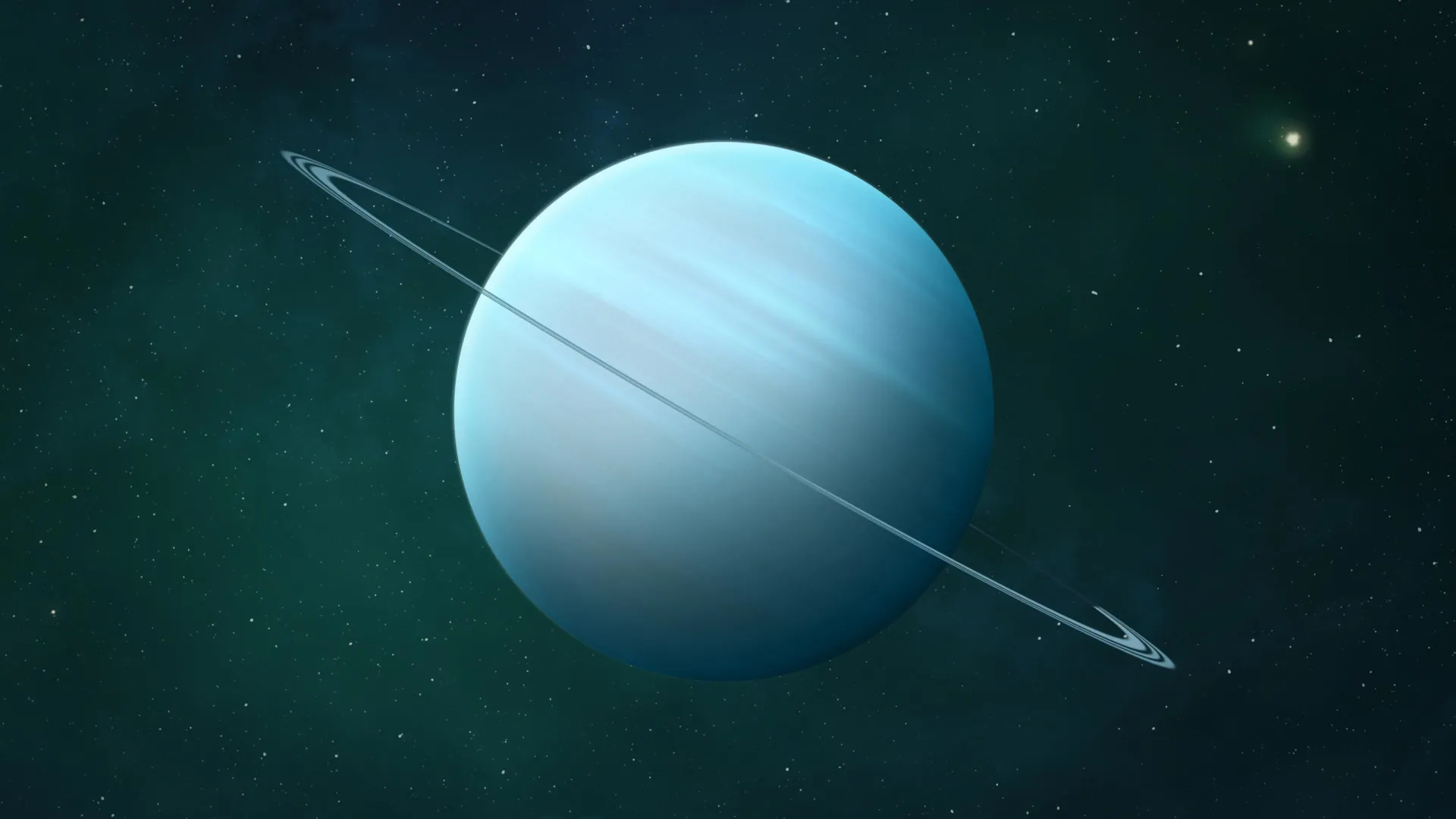Voyager missed it, but now we know Uranus has a fiery secret
- Date:
- August 13, 2025
- Source:
- University of Houston
- Summary:
- For decades, scientists puzzled over why Uranus seemed colder than expected. Now, an international research team led by the University of Houston has solved the mystery: Uranus emits more heat than it gets from the Sun, meaning it still carries internal warmth from its ancient formation. This revelation rewrites what scientists know about the ice giant’s history, strengthens the case for NASA’s upcoming mission, and offers fresh insight into the forces shaping not only other planets, but also Earth’s future climate.
- Share:

A new study led by University of Houston researchers, in collaboration with planetary scientists worldwide, suggests Uranus does have its own internal heat -- an advance that not only informs NASA's future missions but also deepens scientists' understanding of planetary systems, including processes that influence Earth's climate and atmospheric evolution.
The discovery resolves a long-standing scientific mystery about the giant planet, because observational analyses from Voyager 2 in 1986 didn't suggest the presence of significant internal heat -- contradicting scientists' understanding of how giant planets form and evolve.
However, using decades of spacecraft observations and computer models, a team of scientists found Uranus releases more heat than it receives from sunlight, said Xinyue Wang, the first author on the paper and a former doctoral student of UH's Department of Earth and Atmospheric Sciences within the College of Natural Sciences and Mathematics.
"This means it's still slowly losing leftover heat from its early history, a key piece of the puzzle that helps us understand its origins and how it has changed over time," she explained.
The paper published July 14 in Geophysical Research Letters, a top journal publication by the American Geophysical Union. The discovery is consistent with an independent study conducted by a research group led by Professor Patrick Irwin at the University of Oxford.
However, Uranus's internal heat is weaker than its other giant counterparts in the solar system, emitting about 12.5% more heat than it absorbs via sunlight. This is lower compared to fluxes of upwards of 100% measured for Jupiter, Saturn and Neptune, said Xun Jiang, co-author and professor in the Department of Earth and Atmospheric Sciences.
"From a scientific perspective, this study helps us better understand Uranus and other giant planets. For future space exploration, I think it strengthens the case for a mission to Uranus."
Xinyue Wang, UH's Department of Earth and Atmospheric Sciences
It's uncertain why this happened, but researchers said Uranus may have a different interior structure or evolutionary history compared to the other giant planets.
Another notable takeaway from the study was that Uranus's energy levels also change with its long seasons, which last about 20 years. These seasonal changes are likely caused by the planet's off-center orbit and tilted spin, Wang said.
Liming Li, co-author and professor in UH's Department of Physics, said this study could improve planning for NASA's flagship mission to orbit and probe Uranus, an initiative the National Academies of Sciences, Engineering and Medicine classified as its highest priority for the 2023-32 decade.
"From a scientific perspective, this study helps us better understand Uranus and other giant planets," Wang said. "For future space exploration, I think it strengthens the case for a mission to Uranus."
Additionally, the team's methodology provides testable theories and models that could also be applied to explore radiant energy of other planets within and beyond our solar system, Li said. It could even impact technology innovation and climate understanding on Earth.
"By uncovering how Uranus stores and loses heat, we gain valuable insights into the fundamental processes that shape planetary atmospheres, weather systems and climate systems," Li said. "These findings help broaden our perspective on Earth's atmospheric system and the challenges of climate change."
Story Source:
Materials provided by University of Houston. Original written by Kelly Schafler. Note: Content may be edited for style and length.
Journal Reference:
- Xinyue Wang, Liming Li, Michael Roman, Xi Zhang, Xun Jiang, Patrick Fry, Cheng Li, Gwenael Milcareck, Agustin Sanchez‐Lavega, Santiago Perez‐Hoyos, Ricardo Hueso, Tristan Guillot, Conor Nixon, Ulyana Dyudina, Robert West, Matthew Kenyon. Internal Heat Flux and Energy Imbalance of Uranus. Geophysical Research Letters, 2025; 52 (14) DOI: 10.1029/2025GL115660
Cite This Page: